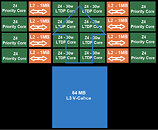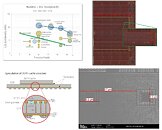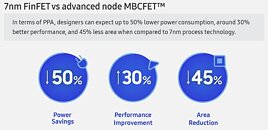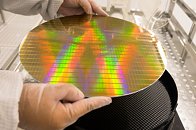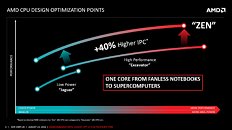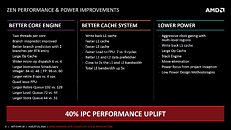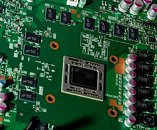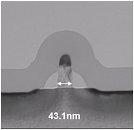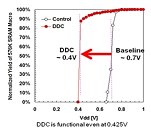
Intel Launches Gaudi 3 AI Accelerator: 70% Faster Training, 50% Faster Inference Compared to NVIDIA H100, Promises Better Efficiency Too
During the Vision 2024 event, Intel announced its latest Gaudi 3 AI accelerator, promising significant improvements over its predecessor. Intel claims the Gaudi 3 offers up to 70% improvement in training performance, 50% better inference, and 40% better efficiency than Nvidia's H100 processors. The new AI accelerator is presented as a PCIe Gen 5 dual-slot add-in card with a 600 W TDP or an OAM module with 900 W. The PCIe card has the same peak 1,835 TeraFLOPS of FP8 performance as the OAM module despite a 300 W lower TDP. The PCIe version works as a group of four per system, while the OAM HL-325L modules can be run in an eight-accelerator configuration per server. This likely will result in a lower sustained performance, given the lower TDP, but it confirms that the same silicon is used, just finetuned with a lower frequency. Built on TSMC's N5 5 nm node, the AI accelerator features 64 Tensor Cores, delivering double the FP8 and quadruple FP16 performance over the previous generation Gaudi 2.
The Gaudi 3 AI chip comes with 128 GB of HBM2E with 3.7 TB/s of bandwidth and 24 200 Gbps Ethernet NICs, with dual 400 Gbps NICs used for scale-out. All of that is laid out on 10 tiles that make up the Gaudi 3 accelerator, which you can see pictured below. There is 96 MB of SRAM split between two compute tiles, which acts as a low-level cache that bridges data communication between Tensor Cores and HBM memory. Intel also announced support for the new performance-boosting standardized MXFP4 data format and is developing an AI NIC ASIC for Ultra Ethernet Consortium-compliant networking. The Gaudi 3 supports clusters of up to 8192 cards, coming from 1024 nodes comprised of systems with eight accelerators. It is on track for volume production in Q3, offering a cost-effective alternative to NVIDIA accelerators with the additional promise of a more open ecosystem. More information and a deeper dive can be found in the Gaudi 3 Whitepaper.
The Gaudi 3 AI chip comes with 128 GB of HBM2E with 3.7 TB/s of bandwidth and 24 200 Gbps Ethernet NICs, with dual 400 Gbps NICs used for scale-out. All of that is laid out on 10 tiles that make up the Gaudi 3 accelerator, which you can see pictured below. There is 96 MB of SRAM split between two compute tiles, which acts as a low-level cache that bridges data communication between Tensor Cores and HBM memory. Intel also announced support for the new performance-boosting standardized MXFP4 data format and is developing an AI NIC ASIC for Ultra Ethernet Consortium-compliant networking. The Gaudi 3 supports clusters of up to 8192 cards, coming from 1024 nodes comprised of systems with eight accelerators. It is on track for volume production in Q3, offering a cost-effective alternative to NVIDIA accelerators with the additional promise of a more open ecosystem. More information and a deeper dive can be found in the Gaudi 3 Whitepaper.



























